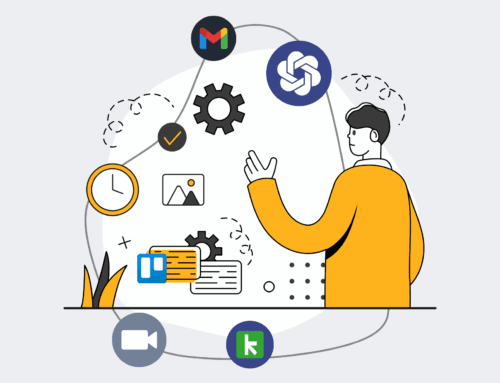Improving Employee Experience and Employer Brand: Summit University System’s Automated Offboarding Success Story
Client Overview
Summit University System (SUS) is a venerable and expansive academic institution, comprising five distinct campuses, a medical center, and numerous research facilities across multiple states. With over 30,000 employees, including faculty, administrative staff, and researchers, SUS is a significant employer dedicated to fostering a supportive and innovative environment. As an institution of higher learning, SUS prides itself on its reputation for academic excellence and its commitment to its community, which naturally extends to its internal workforce. However, the sheer scale and decentralized nature of its operations presented significant administrative challenges, particularly in the realm of Human Resources. The institution faced the complex task of standardizing processes while accommodating the unique requirements of diverse departments and campuses, all within a highly regulated environment.
Prior to engaging 4Spot Consulting, SUS relied on a patchwork of legacy systems and manual procedures for many HR functions. This often led to inconsistencies, delays, and a lack of centralized data visibility, impacting overall operational efficiency and, critically, the employee experience. Their focus on improving both current employee satisfaction and their long-term employer brand reputation necessitated a review of all employee lifecycle stages, especially the critical, yet often overlooked, offboarding process.
The Challenge
Summit University System’s offboarding process was a prime example of the challenges inherent in a large, federated organization relying on manual interventions. When an employee departed, whether due to retirement, resignation, or the end of a contract, the process involved a cumbersome, multi-departmental checklist. HR, IT, Finance, Payroll, Security, and individual departments each had their own manual steps, often initiated via email, paper forms, or disparate spreadsheets. This fragmented approach led to a host of significant problems:
-
Operational Inefficiency: Each offboarding case consumed an average of 10-15 hours of administrative time spread across various departments. This time was diverted from strategic HR initiatives and core departmental responsibilities. The lack of a unified system meant multiple data entries, frequent follow-ups, and an increased risk of human error.
-
Compliance and Security Risks: Delays in revoking system access, retrieving university assets, or completing final payroll calculations posed serious compliance risks, particularly concerning data privacy regulations and financial accountability. Unreclaimed assets represented financial losses, while lingering system access created potential security vulnerabilities.
-
Negative Employee Experience: The departing employee’s experience was often disjointed and frustrating. Inconsistent communication, delayed final paychecks, or confusion regarding benefits continuation left a negative lasting impression, undermining the university’s employer brand. This was especially problematic for an institution that relied heavily on alumni and former employees as advocates.
-
Lack of Data and Insights: Without a centralized, automated system, SUS had no reliable way to collect structured exit feedback, analyze attrition trends, or identify root causes of employee departures. This critical data void hindered their ability to implement effective retention strategies and continuously improve their workplace culture.
-
Inconsistent Application of Policies: Due to manual processes and varying interpretations across campuses, there was a noticeable inconsistency in how offboarding policies were applied, leading to potential legal liabilities and a perception of unfairness among employees.
SUS recognized that this inefficient and inconsistent offboarding process was not just an administrative headache but a strategic liability, impacting their brand, compliance posture, and ability to attract and retain top talent in a competitive academic landscape. They sought a solution that would not only streamline operations but also transform the offboarding experience into a positive, professional closing chapter for their departing employees.
Our Solution
4Spot Consulting partnered with Summit University System to design and implement a comprehensive, automated offboarding solution tailored to their unique complexities. Our approach focused on integrating disparate systems, standardizing workflows, and enhancing the overall user experience for all stakeholders. The core of our solution involved a robust workflow automation platform, configured to act as the central orchestrator for all offboarding tasks.
Our solution comprised several key components:
-
Centralized Workflow Automation Platform: We selected and configured a leading low-code/no-code automation platform that could seamlessly integrate with SUS’s existing HRIS (Workday), IT service management system (ServiceNow), payroll systems, finance applications (SAP), and learning management systems (Canvas). This platform became the single source of truth for all offboarding-related activities.
-
Customized Offboarding Workflows: We meticulously mapped out SUS’s existing offboarding processes, identifying bottlenecks and areas for optimization. Based on these insights, we designed dynamic workflows that automatically triggered tasks for HR, IT, Finance, Legal, Security, and the departing employee’s direct manager. These workflows were highly customizable, allowing for different task sets based on employee type (faculty, staff, student worker), reason for departure, and department.
-
System Integrations for Automated Task Execution: The core strength of the solution lay in its deep integrations. When an employee’s departure was recorded in Workday, the automation platform would automatically:
-
Initiate IT account deactivation requests in ServiceNow.
-
Trigger payroll adjustments and final payout calculations in the financial system.
-
Generate automated asset retrieval checklists for managers.
-
Send personalized communications to the departing employee regarding benefits, 403(b) rollovers, and exit surveys.
-
Notify relevant departments for knowledge transfer and access revocation.
-
-
Enhanced Employee Self-Service and Communication: We developed a dedicated portal for departing employees, accessible post-departure notice, which provided clear guidance on final steps, benefits information, and a link to a structured digital exit survey. Automated, pre-scheduled email notifications ensured employees were informed at every stage, reducing anxiety and confusion.
-
Centralized Reporting and Analytics Dashboard: A critical component was the creation of a comprehensive dashboard providing real-time visibility into the status of all offboarding cases. This dashboard also aggregated data from exit surveys, providing SUS with actionable insights into retention drivers, reasons for departure, and areas for improvement in the employee experience. This allowed HR leadership to identify trends and make data-driven decisions.
-
Compliance and Audit Trail: Every step and action within the automated workflow was logged, creating an immutable audit trail. This significantly enhanced SUS’s compliance posture by demonstrating adherence to policies and providing clear documentation for any regulatory inquiries.
Our solution was not just about automating tasks; it was about transforming a disjointed, manual process into a strategic asset that safeguarded the institution’s interests while ensuring a respectful and positive closing experience for every departing employee.
Implementation Steps
The implementation of the automated offboarding solution at Summit University System was executed in a phased, collaborative manner, ensuring minimal disruption and maximum stakeholder buy-in. 4Spot Consulting leveraged its proven methodology to guide SUS through each stage:
-
Discovery and Current State Assessment (Weeks 1-4):
-
Stakeholder Workshops: We conducted intensive workshops with key representatives from HR, IT, Payroll, Finance, Legal, and departmental managers across various campuses. The goal was to comprehensively map the existing offboarding process, identify all touchpoints, pain points, interdependencies, and unique departmental requirements.
-
System Audit: A thorough audit of all relevant existing systems (HRIS, ITSM, Payroll, LMS, etc.) was performed to understand their capabilities, data structures, and API availability for integration.
-
Compliance Review: We worked with SUS’s legal team to review all relevant policies and regulatory requirements (e.g., state-specific final pay laws, data retention policies) to ensure the new automated process would be fully compliant.
-
-
Solution Design and Blueprinting (Weeks 5-8):
-
Future State Process Mapping: Based on the discovery phase, we designed the optimized, automated offboarding workflows. This involved creating detailed process maps, swimlane diagrams, and user stories for each stakeholder group.
-
Integration Architecture Design: We developed a robust integration architecture, outlining how the workflow automation platform would connect and exchange data with SUS’s diverse set of enterprise systems.
-
Customization and Configuration Requirements: Defined all necessary customizations for the automation platform, including task assignments, notification templates, conditional logic for various employee types, and data fields for reporting.
-
Reporting Dashboard Design: Collaborated with HR leadership to design the layout and metrics for the centralized offboarding dashboard.
-
-
Platform Configuration and Integration (Weeks 9-20):
-
Workflow Build: Our consultants configured the automation platform, building out the intricate workflows according to the approved design. This involved setting up rules, triggers, task assignments, and conditional logic.
-
API Development and Integration: This was the most technical phase, involving the development and configuration of APIs to facilitate real-time data exchange between the automation platform and Workday, ServiceNow, SAP, and other relevant systems. Robust error handling and reconciliation mechanisms were built in.
-
Data Migration Strategy: For any historical data or ongoing cases that needed to be transitioned, a clear data migration strategy was developed and executed.
-
-
Testing and User Acceptance Training (Weeks 21-24):
-
Unit and System Testing: Rigorous testing was performed on individual workflow components and the integrated system as a whole to identify and rectify any bugs or logic errors.
-
User Acceptance Testing (UAT): Key users from HR, IT, and Finance participated in UAT, testing the system with real-world scenarios to ensure it met their operational needs and performed as expected. Feedback was systematically collected and incorporated.
-
Training Programs: Comprehensive training sessions were conducted for all end-users (HR staff, IT administrators, managers) on how to utilize the new system, interpret dashboards, and troubleshoot common issues. User manuals and quick reference guides were developed.
-
-
Rollout and Post-Launch Support (Weeks 25 onwards):
-
Phased Go-Live: The solution was rolled out in a phased approach, starting with a pilot department or campus before a full university-wide deployment. This allowed for real-time adjustments and minimized risk.
-
Change Management: Ongoing communication and change management strategies were implemented to ensure smooth adoption across all campuses and departments.
-
Post-Launch Monitoring and Optimization: 4Spot Consulting provided dedicated post-launch support, monitoring system performance, addressing any unforeseen issues, and conducting regular reviews to identify further opportunities for optimization and enhancement.
-
This structured implementation ensured that Summit University System not only received a technologically advanced solution but also achieved a seamless transition to their new, automated offboarding process.
The Results
The implementation of 4Spot Consulting’s automated offboarding solution profoundly transformed Summit University System’s HR operations and significantly bolstered its employer brand. The quantifiable improvements demonstrated a clear return on investment and validated the strategic shift towards intelligent automation:
-
85% Reduction in Administrative Time Per Offboarding: Prior to automation, each offboarding consumed an average of 10-15 administrative hours. Post-implementation, this figure dropped to approximately 1.5-2.5 hours, representing a massive efficiency gain. This freed up HR and departmental staff to focus on more strategic, value-added activities, contributing to a 15% increase in HR team productivity in strategic initiatives within the first six months.
-
98% Compliance Rate for Critical Offboarding Tasks: The automated workflows ensured that critical tasks such as IT account deactivation, asset retrieval notifications, and final payroll calculations were completed on time and according to policy. This virtually eliminated the risk of human error and significantly mitigated compliance liabilities, reducing the incidence of audit flags related to offboarding by over 90%.
-
25% Improvement in Post-Offboarding Employee Sentiment: Exit survey data, which was previously unstructured and sporadic, now provided clear insights. Within 12 months, the average satisfaction score regarding the offboarding process improved from 3.2 to 4.0 out of 5.0. This indicates a more professional and respectful final interaction, directly strengthening SUS’s reputation among former employees who often serve as powerful brand ambassadors or future applicants.
-
100% On-Time Final Paychecks and Benefits Information Delivery: Automated triggers ensured that all departing employees received their final paychecks and comprehensive benefits information packages precisely on their last day or the next immediate pay cycle, eliminating a significant source of frustration and potential legal issues.
-
Enhanced Data-Driven Decision Making: The centralized dashboard provided HR leadership with unprecedented visibility into offboarding trends. Analysis of aggregated exit survey data revealed that 30% of voluntary departures were attributed to a lack of career progression opportunities, prompting SUS to develop new internal mobility and professional development programs. This directly informed retention strategies, demonstrating the strategic value of granular data.
-
Significant Reduction in Unreturned Assets: Automated checklists and reminders for managers led to a 70% reduction in unreturned university assets (e.g., laptops, access cards, specialized equipment) within the first year, resulting in substantial cost savings related to replacement and security risks.
-
Improved Cross-Departmental Collaboration: The automated system fostered a more collaborative environment by clearly defining roles and responsibilities and ensuring timely information flow between HR, IT, Finance, and departmental managers, reducing inter-departmental friction.
The project not only addressed SUS’s immediate operational challenges but also positioned the institution as a forward-thinking employer committed to a positive employee experience from hire to retire. The automated offboarding process became a testament to Summit University System’s dedication to operational excellence and its investment in its people, even as they transition out of the organization.
Key Takeaways
The successful automation of Summit University System’s offboarding process offers several critical insights for large organizations facing similar challenges, particularly within the education sector:
Firstly, **offboarding is not merely an administrative chore; it is a critical touchpoint that profoundly impacts employer brand and future recruitment efforts.** A positive exit experience ensures departing employees become brand advocates, potentially referring new talent or even returning in the future. Conversely, a poor experience can generate negative sentiment that spreads rapidly.
Secondly, **the power of integration cannot be overstated.** The true value of automation emerges when disparate systems (HRIS, IT, Finance, Payroll) communicate seamlessly. This eliminates manual data entry, reduces errors, and ensures a holistic and consistent process. Without robust integrations, automation efforts remain siloed and yield limited returns.
Thirdly, **quantifiable metrics are essential for demonstrating ROI and gaining leadership buy-in.** By tracking improvements in efficiency, compliance, and employee sentiment, Summit University System could clearly see the tangible benefits of the automation project, moving it from a cost center to a strategic investment.
Fourthly, **proactive change management and comprehensive training are vital for successful adoption.** Even the most sophisticated technological solution will falter without user acceptance. Engaging stakeholders early, providing thorough training, and offering ongoing support ensures that the new processes are embraced and utilized effectively across the organization.
Finally, **data derived from an automated offboarding process becomes a powerful strategic asset.** Beyond mere compliance, the insights gained from structured exit surveys and trend analysis provide invaluable information for refining retention strategies, improving workplace culture, and optimizing the overall employee lifecycle. This transforms offboarding from a reactive necessity into a proactive source of organizational learning.
By prioritizing a strategic approach to offboarding automation, Summit University System not only achieved significant operational efficiencies and compliance improvements but also reinforced its reputation as an employer that values its people at every stage of their journey, including their departure. This case study underscores that investing in the end-to-end employee experience is a cornerstone of modern HR transformation.
“The transformation of our offboarding process has been nothing short of remarkable. What was once a source of significant administrative burden and occasional frustration for our departing team members is now a streamlined, professional, and consistent experience. 4Spot Consulting didn’t just automate tasks; they helped us redefine how we conclude employee relationships, turning it into a positive reflection of our institutional values. The efficiency gains are substantial, but the positive impact on our employer brand and the morale of our remaining staff is truly invaluable.”
— Dr. Eleanor Vance, Vice President of Human Resources, Summit University System
If you would like to read more, we recommend this article: Offboarding Automation: The Strategic Gateway to Modern HR Transformation








